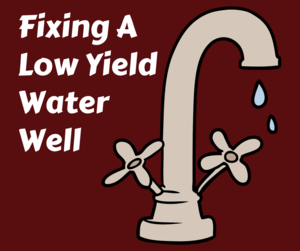CALL TODAY 1-800-441-6281
CALL TODAY 1-800-441-6281

Disinfecting Residential Well Water with Ultraviolet Radiation
- Tags:
- water treatment
If your well water is susceptible to bacterial contamination, there may be a problem with your water system. Instead of investing in replacing their water system, some homeowners may want to simply treat the bacterial contamination with an ultraviolet disinfection device.
Learn more about water contamination.
Ultraviolet disinfection is a quick and affordable way to rid your water of bacteria without chemicals or effect on the water’s taste or odor. It works by interrupting the bacteria’s ability to reproduce and is similar to the way sunlight disinfects the water in open streams and ponds.
Each ultraviolet or UV, system has a lamp, a sleeve to protect the lamp, control panel and plumbing connections. Water from your well enters the device and is exposed to a light that transmits ultraviolet radiation. The light must come into contact with each microorganism to effectively kill the contamination, so if the water is cloudy or has sediments like iron and manganese, it could make the UV device less effective. A pre-filter system to clarify the water would fix this problem.
The ultraviolet device can be wired to stop and start with the home’s well pump, but manufacturers usually recommend running the lamp continuously to kill any bacteria that migrates into the device when the well pump is off.
The effectiveness of the disinfection device may be reduced by mineral or bacterial film buildup on the UV lamp sleeves. Some devices have an automatic cleaning mode, while others have a cleaning mode that must be started manually. The sleeves should be cleaned twice a year and alarms can be installed that alert the homeowner when the strength of the UV light is diminished.
The bulbs used in the ultraviolet lamp should be changed after 9,000 hours of use, or roughly once a year. The bulb will lose some of its strength after time, so it should be regularly replaced, even if it seems to be working fine. It’s a good idea to keep a spare bulb around at all times. You should never look directly at a lit UV lamp.
Another component that needs regular inspection is the pre-sediment filter cartridge. The NH Department of Environmental Services recommends checking the filter ever four months when the ultraviolet disinfection device is first installed. These cartridges are usually affordable, about $5 each. The replacement UV lamps are about $100 and the annual cost of continually running the ultraviolet device is about $100.
Learn more about water treatment.
To find the right size device for your home, you first must find out how much water flows from your well. This number helps determine if there is enough time for your water to be properly disinfected within your selected device.
If you have a submersible well pump, find out the maximum flow when the pump first starts after a long period at rest. This is usually higher than the long-term sustained flow rate. To do this, turn on multiple faucets in your house and measure how many gallons of water flow per minute from each. Add them together to get the total flow rate.
You will need the flow rate when shopping for a device. A water system specialist can help you conduct the flow test if needed, or simply refer you to the ultraviolet device that will best serve your needs. Skillings & Sons has been helping homeowners find the right home water treatment systems for 30 years and our representatives are available to help you with every step, from water testing to equipment installation.
Not sure how clean your water is? Read our bit on Water Testing to see what you can do and contact the water treatment experts at Skillings & Sons.
..

